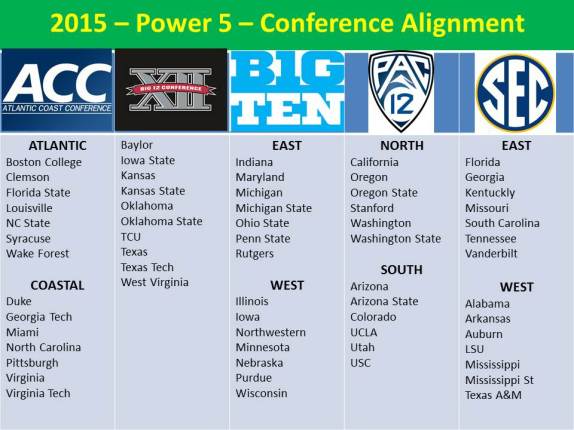You know, it wasn’t that long ago when most of us would not have been aware tomorrow is Signing Day for High School seniors to sign their Letters of Intent (LOI) with the colleges and universities they planned to attend in the coming fall. My how things have changed.
Now, there are subscription web-sites with 100s of thousands of subscribers, chat rooms full of discussions, rankings of stars all over the place and television stations with all day coverage of the faxes coming in. Just amazing!
And, this changes the landscape a little bit. The attention some of these high school kids get is both phenomenal and disgusting. There are thousands of people following their every move on social networking sites. There are press conferences set up in high school gyms and the, sometimes infamous, selection of the hat. Just unbelievable. And, Some Other Dude is caught up in it just like the rest of you.
One interesting phenomena, I think, that comes out of this is the “flavor of the month” aspect. We follow our teams’ recruiting efforts; see who made verbal commitments and how many stars they wear. We know the names and statistics for hundreds of kids and have seen video for dozens of them. We have high hopes for many who have yet to even enroll in the school, yet alone played one down of college football. Then, signing day comes, we get all excited, re-read the profiles of the kids who did sign the dotted line and then start looking at next year’s prospects – the new flavors.
Then, the kids who were in the spotlights the year before get red-shirted, get injured, can’t adjust to the new environment, or are just buried in the depth chart and are, so it seems, quickly forgotten. We seem to expect the new year’s recruits to unseat last years’ recruits just because they didn’t immediately become superstars, or even starters. And, because we started following these kids back in their junior years in high school, if they don’t start on the college team before they are juniors there, we forget about them completely and write them off as busts. Funny how that works.
So, SOD wonders, how many 5 stars actually make a big splash on campus their freshmen year? Lets take a look at last year’s class.
According to ESPN, the 2014 Recruiting Class included 15, 5 star recruits.
The number 1 recruit, RB Leonard Fournette lived up to the hype and, actually, did make a splash with LSU. Leonard carried the ball 187 times for 1,034 yards with 10 TDs and had 7 receptions for 127 yards. A good year that ended with a 143 yards rushing effort against Notre Dame in the Music City Bowl. No one will be forgetting Leonard Fournette any time soon. Splash.
The number 2 ranked recruit was Jabrill Peppers, a DB who signed with Michigan. Jabrill had a tough first year at Michigan. He played sparingly in the first four games before being sidelined by injury and applying for a medical red-shirt. Jabrill totaled 8 tackles in 2014. No splash.
Coming in at number 3 was Cameron Robinson an OT who signed with Alabama. Offensive line is typically a position that requires time to make the first team on the depth chart, and often, those recruits who are most easily forgotten. Cam, however, lived up to his billing and started in all 14 of Alabama’s games. Splash.
Number 4 was DE Myles Garrett who signed with Texas A & M. Myles had a terrific freshmen year for the Aggies leading the team in QB sacks (11.0), tackles for loss (12.5) and QB hurries (9) while also being 2nd amongst defensive linemen with 50 tackles. Splash.
Number 5 was Andrew Brown, a DT signing with Virginia. Andrew was one of four true freshmen to see playing time with the Cavaliers, appearing in 6 games, including the final 4 games. Andrew amassed 4 tackles in his playing time. It certainly is an accomplishment for a true freshman to find the playing field, but, there was no splash here.
The number 6 ranked recruit, according to ESPN, was Da’Shawn Hand, a DE who signed with Alabama. As a true freshmen, Da’Shawn played in 9 games and recorded 7 total tackles (4 unassisted, 3 assisted). Again, quite an accomplishment to find playing time on a team that competed for the National Championship, but not a splash … yet.
Number 7 in the class of 2014 was Speedy Noil, listed as an ATH, who signed with Texas A&M. Like fellow Texas A&M signee, Myles Garrett, Speedy had a terrific first year for the Aggies. Speedy performed as a receiver and return man throughout the year. Speedy led the Aggies in all-purpose yards, punt return yards and kickoff return yards despite missing a game due to injury. Speedy amassed 559 yards on 44 receptions with 5 TDs; 575 yards on 24 kickoff returns (24.0 avg); and, 178 yards on 14 punt returns (12.7 avg). All in all, a nice splash.
The number 8 recruit was Tony Brown, a CB who signed with Alabama (man, I’m beginning to see a pattern here – the SEC killed it!). Tony played in 13 games, starting 2 (games 4 and 5). Tony recorded 10 total tackles (7 ua, 3 a). A good start to a promising career, but not quite splash status.
Coming in at number 9 was Adoree’ Jackson, a WR signing with USC. Adoree’ played in all 13 Trojan games, starting the last 9. Adoree’ had 10 total receptions for 138 yards and 3 TDs; 1 rush for 5 yards; 2 punt returns for 12 yards; and, 23 kick returns for 684 yards. Adoree’ showed lots of promise and, indeed, made a splash, especially with his kick return abilities.
Rounding out the top 10 was Quin Blanding, a S who signed with Virginia (lots of repeat team names at the top of this list). Quin was another one of the four true freshmen to start a game for Virginia and, in fact, was one of 10 Cavaliers to start all 12 games. Quin finished the year with 123 tackles which ranked him #2 in the ACC and #12 nationally. And, Quin led the team with 3 interceptions in the 2014 campaign. Big splash.
The number 11 recruit was Jalen Tabor, a CB signee with Florida. Jalon played in all 12 of Florida’s games in 2014 recording 31 total tackles (22 ua, 9 a) and 1 interception on the year. Jalen had a nice start to his career with Florida, worthy of splash status.
Number 12 in the class was yet another Alabama signee, ATH Bo Scarbrough. Although Bo signed with Alabama, he was not cleared to enroll in the fall due to some academic eligibility issues. Bo worked on these issues and was enrolled in Alabama in January and attended Bama practices leading up to the Sugar Bowl. No splash in 2014, but just wait.
The number 13 recruit was Raekwon McMillen, an ILB who signed with Ohio State. Raekwon played in 13 of the 14 games Ohio State played in 2014, having to sit out the Alabama contest in the Sugar Bowl. Although Raekwon did not start in any games, Ohio State has pretty good depth at linebacker, he did contribute significantly with 54 total tackles (30 ua, 24 a). Raekwon also recorded 2.5 sacks and 6.5 tackles for loss. Raekwon left no doubt in anybody’s mind that he will be a force to be reckoned with on the Ohio State defense – worthy of a splash.
Number 14 on the list was Lorenzo Carter, listed as a DE signing by Georgia. Lorenzo actually played as a linebacker for the Bulldogs, playing in all 13 games and starting in the last 5 games. Lorenzo recorded 41 total tackles (18 ua, 23 a), getting better as the season went on. Lorenzo also recorded 4.5 sacks and 7.0 tackles for loss, and he is responsible for 1 fumble recovered. Lorenzo made a splash on the Georgia defense.
And, finally, the number 15 and last of the five star recruits from the class of 2014 – and, Alabama’s fifth signee from this class, was CB Marlon Humphrey. Marlon happens to play a position that is deep at Alabama. Fellow CB recruit Tony Brown was able to find some playing time, but Marlon did not find the field in 2014. Things look good for Bama in the future with concerns to their defensive backfield, but no splashes were made in 2014 with their 5-star CB recruits.
So, all-in-all, the 2014 5-star recruits were shining pretty bright. SOD counts 9 recruits who made a splash for their teams in their true freshmen year. Two 5-stars did not find the field in 2014 – 1 red-shirt and 1 academically ineligible. And, another 5-star was injured and applied for a medical red-shirt.
But, let’s not give up on our other recruits who have yet to make the starting roster. As we celebrate the incoming class – poised to sign their LOIs tomorrow – let’s keep the love for those young men we followed so closely in 2014, 13, 12 and, in some cases, even 2011.
Have fun tomorrow and good luck with your signing class.




